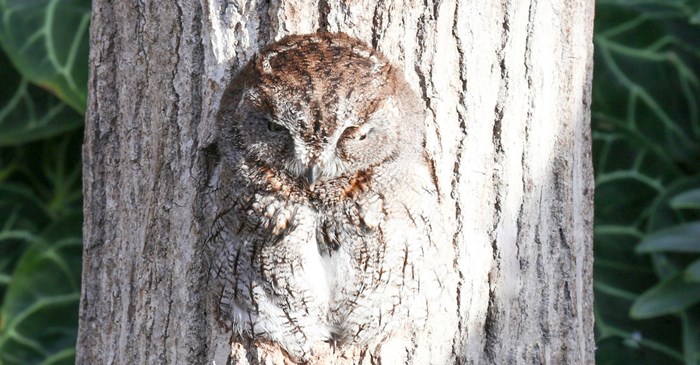You might spot a sleeping duck on the shore (keeping one eye on you), or even an owl resting in a tree before nightfall. However, it’s rare to catch a wild songbird in the act of sleeping. When you think about their lives and hectic schedules — singing before dawn, feeding their nestlings, foraging for food, surviving severe conditions of weather and migration — you may wonder how they do it.
Songbirds do get their beauty rest. They just don’t do it out in the open.
In general, most songbirds sleep at night, up high and out of sight, usually in the treetops, huddled close to the trunk. They fluff out their feathers, which trap pockets of air to keep them warm, and tuck their heads under a wing — which helps them breathe in warm air. They may also tuck one foot into their body. This raises another question: How do birds sleep standing on one foot? When birds put body weight on their legs, it forces the tendons in their feet to tighten. This allows them to keep a good grip without having to think about it.
Nests are often seen as resting stations for birds, but the truth is, once the babies grow up and leave, birds don’t use the empty nest as a bed. The exception is birds that nest in tree cavities, such as chickadees and woodpeckers.
Scientists have also discovered some bird species have a unique sleeping ability called unihemispheric slow-wave sleep. This means half their brain sleeps while the other half stays aware of their surroundings. While some primates can do this, what sets birds apart is their ability to turn it on and off as needed.
To make your yard a good sleep oasis for your feathered friends, keep the bright lights off at night and maintain your trees and shrubs. Before winter, give the nesting boxes a cleaning, but keep them out all winter to give birds a ready retreat from the cold.
